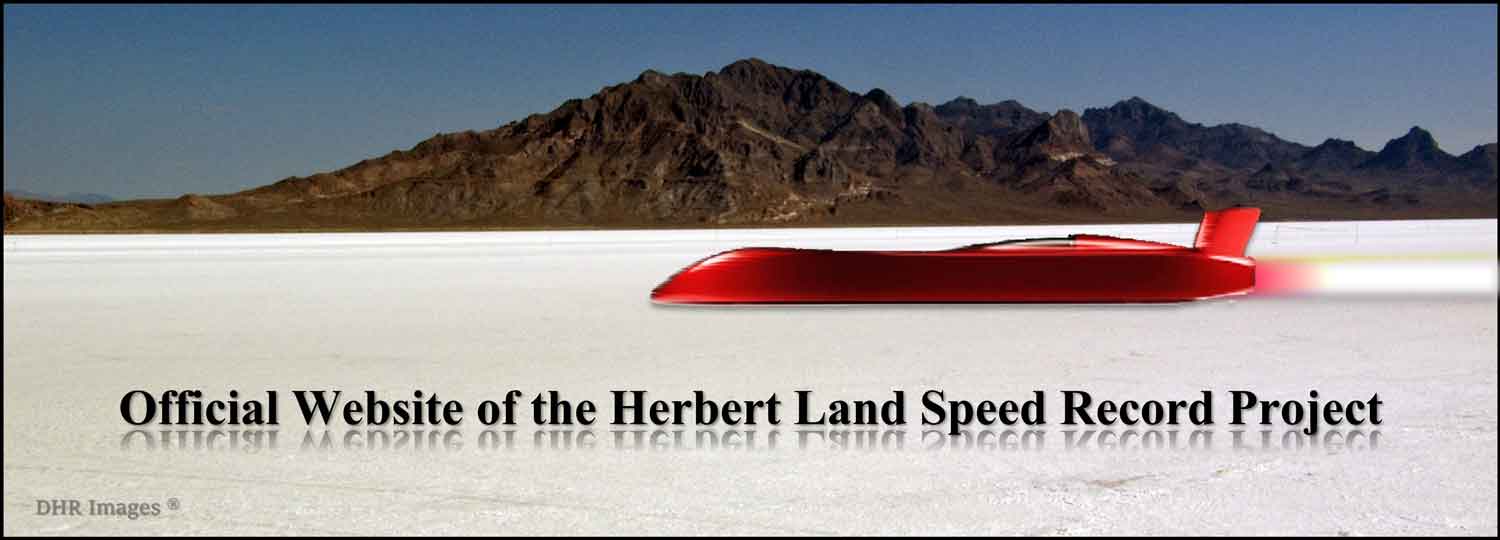
How did Doug Herbert & Ray Evernham get together on this project? When will the Herbert-Evernham car be racing? Who is going to drive the car? Where will you test the car? When will the car be ready to race? What kind of engine will the car have in it? How much power will the car have? What class will the car compete in? Where is the car being built and who is involved with the project? What kind of tires will you use on the car? What kind of transmission will the car have? How long is the Bonneville course and at what point during the course do they measure your speed? What happens if the race rains out? Where do you find all the parts for this car? What are the dimensions of the car? Considering the torque these two engines will be developing, will they both be rotating in the same direction? Summers Bros. had the front and third rotating in the same direction. The second and fourth rotating in the other direction. Who is the current record holder? Who can I contact for more information about this exciting project? |
|||||||

Doug Herbert has decided to delay his land speed record attempt until 2023 Doug Herbert will not compete in his streamliner at Speed Week until then. He has decided to delay the run for several reasons; including not having adequate time for testing. “This isn’t something you want to rush along,” said Doug Herbert, who will pilot the streamliner. “When we started this project, I don’t think any of us involved realized how long it would take to get everything right and that’s what we’re trying to do. We don’t want to just head out there without knowing how the car will perform. We want to take our time and get it right, so when we do make it to Bonneville we’ll run well.” The car, which is near completion, needs work done on the body and engines. The LSR Project team hopes to finish work in a timely fashion and start testing the streamliner as soon as feasible.
The History of Bonneville
The Bonneville Salt Flats, which is a remnant of the ancient Lake Bonneville of glacial times, is named for Benjamin Bonneville, a US army officer who explored the area in northwestern Utah. With salt recorded at a depth of 6 feet in certain areas, the Bonneville Salt Flats are public land managed by the Bureau of Land Management. Because the area is extremely flat and rainfall flattens the densely-packed sand, the Bonneville Salt Flats are recognized as a perfect landscape for speed-testing.
It was in 1896 that the potential of the Salt Flats for speed-testing was first recognized and by 1914 the first attempt of an automobile speed record was performed. By the 1930s the Salt Flats had gained international attention as the number of racers coming to compete at the flats increased. By the late 1940s the area was recognized as the standard course for world land speed records. Since racers began competing at the Flats hundreds of records have been set and broken in a variety of automotive and motorcycle classes, including the 300, 400, 500, and 600 mile per hour land speed barriers.
Chet Herbert, Doug's dad, was one of the early pioneers of racing in Bonneville. Click on the pictures on the right of this page to enlarge them and view some of Chet's many Bonneville cars.
The annual Speed Week, which is held in mid-August, along with the World Finals, draws competitors from around the world. The SCTA (Southern California Timing Association), which is an all-volunteer organization comprised of twelve individual clubs, manages Speed Week, which features thousands of racers attempting to set new records in their respective classes.
To learn more about the SCTA or Speed Week, visit www.scta-bni.org

